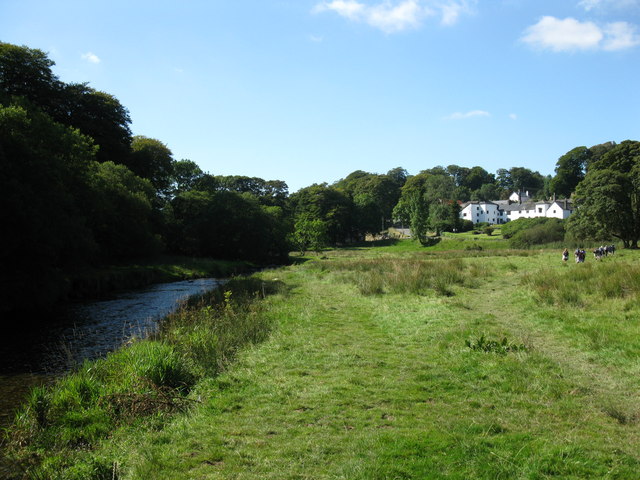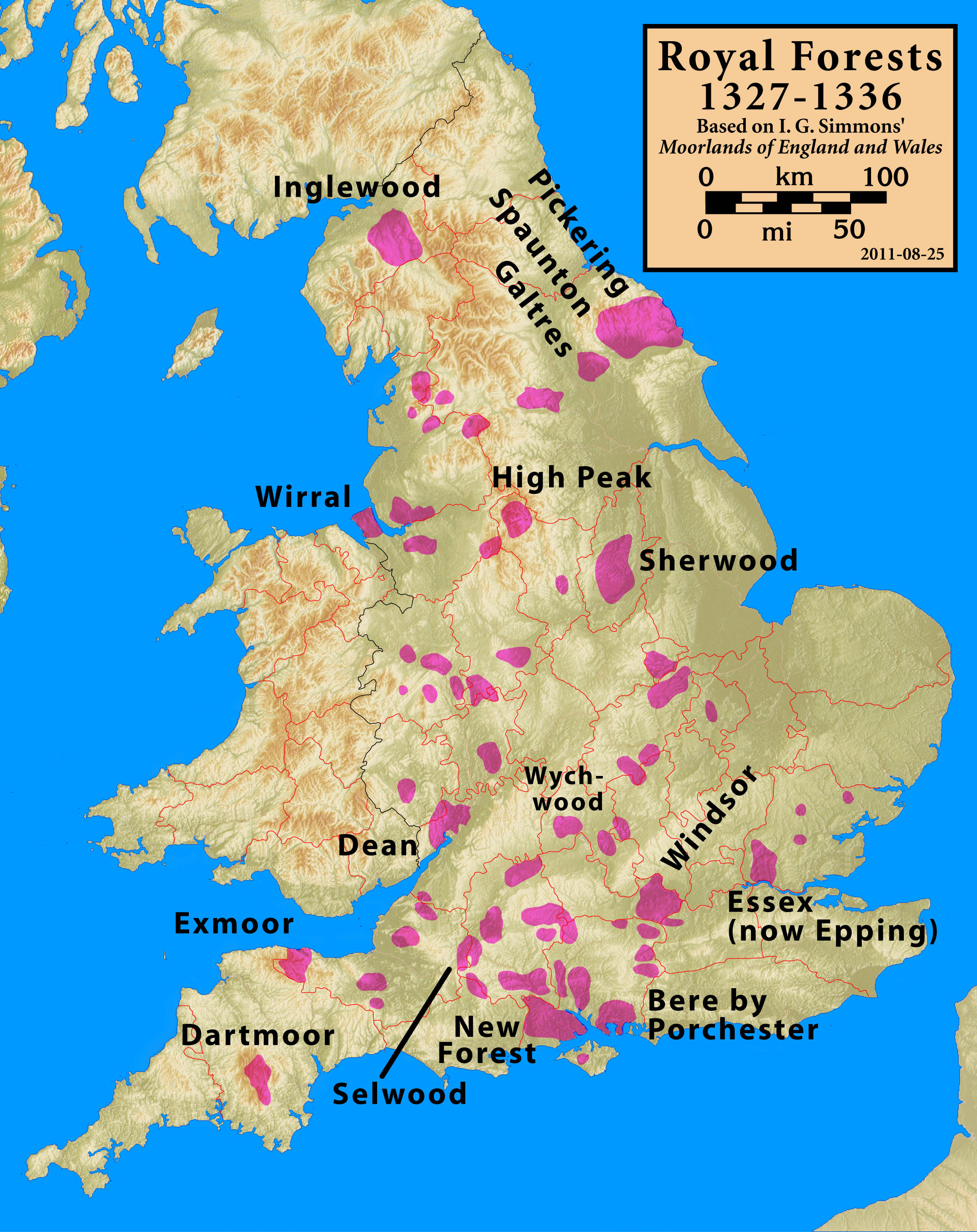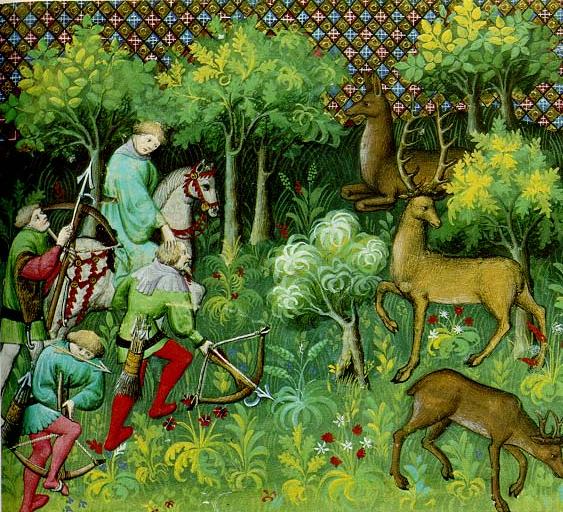|
Simonsbath
Simonsbath () is a small village high on Exmoor in the England, English ceremonial county, county of Somerset. It is the principal settlement in the Exmoor civil parish, which is the largest and most sparsely populated civil parish on Exmoor, covering nearly but with a population, at the time of the 2001 United Kingdom census, 2001 census, of 203 in 78 households, reducing to 156 at the 2011 United Kingdom census, 2011 census. The River Exe rises from a valley to the north, and the River Barle runs through the village and is crossed by a triple-arched medieval bridge that was extensively repaired after floods in 1952. The settlement lies on the route of the Two Moors Way and close to the Macmillan Way West. Toponymy The ''-bath'' element in this place-name, not recorded before 1791, is easily accounted for: the Old English ''bæth'' signified "water, a pool". The identity of ''Simon'' is less sure. R. J. King pointed out that the name is frequently met with in the W ... [...More Info...] [...Related Items...] OR: [Wikipedia] [Google] [Baidu] |
Simonsbath House
Simonsbath House is a historic house in Simonsbath on Exmoor in Somerset, England. The Grade II listed building is now the Simonsbath House Hotel, and outdoor activity centre. It lies in the valley of the River Barle and on the Two Moors Way footpath. History The house was built in the mid-17th century by the merchant, lawyer and philosopher James Boevey (1622-1696), the warden of the royal forest of Exmoor, and for 150 years his was the only house in the forest. After the death of Boevey and his wife the house was sold with the Exmoor estate to Robert Siderfin of Luxborough. Siderfin used the grazing rights he gained on the estate but let the house to tenants; one of these was John Dennicombe, who allowed the house to fall into disrepair, and was eventually evicted, but only after he had burnt much of the wood panelling and other fixtures in the house. During the second half of the 18th century and the early part of the 19th century, the wardens of the forest were the Aclan ... [...More Info...] [...Related Items...] OR: [Wikipedia] [Google] [Baidu] |
Exmoor
Exmoor () is loosely defined as an area of hilly open moorland in west Somerset and north Devon in South West England. It is named after the River Exe, the source of which is situated in the centre of the area, two miles north-west of Simonsbath. Exmoor is more precisely defined as the area of the former ancient royal hunting forest, also called Exmoor, which was officially surveyed 1815–1818 as in extent. The moor has given its name to a National parks of England and Wales, National Park, which includes the Brendon Hills, the East Lyn Valley, the Vale of Porlock and of the Bristol Channel coast. The total area of the Exmoor National Park is , of which 71% is in Somerset and 29% in Devon. The upland area is underlain by Sedimentary rock, sedimentary rocks dating from the Devonian and early Carboniferous periods with Triassic and Jurassic age rocks on lower slopes. Where these reach the coast, cliffs are formed which are cut with ravines and waterfalls. It was recognised a ... [...More Info...] [...Related Items...] OR: [Wikipedia] [Google] [Baidu] |
River Barle
The River Barle runs from the Chains on northern Exmoor, in Somerset, England to join the River Exe at Exebridge, Devon. The river and the Barle Valley are both designated as biological Sites of Special Scientific Interest. On the Chains above Simonsbath is a former reservoir known as Pinkery Pond. It was formed in the 19th century when John Knight and his son dammed the river at that point. Vestiges of a small water channel sometimes referred to as a 'canal' can be seen nearby. Wheal Eliza Mine was an unsuccessful copper and iron mine on the river near Simonsbath. The river passes under a late medieval six-arch stone Landacre Bridge in Withypool, and the Tarr Steps, a prehistoric clapper bridge possibly dating from 1000 BC. The stone slabs weigh up to 5 tons apiece. According to local legend, they were placed by the devil to win a bet. The bridge is long and has 17 spans. It has been designated by English Heritage as a grade I listed building. In Dulverton the ... [...More Info...] [...Related Items...] OR: [Wikipedia] [Google] [Baidu] |
James Boevey
James Boevey (1622–1696) (pronounced "Boovey") was an English merchant, lawyer and philosopher of Huguenot parentage. Origins He was born in London at 6 a.m. on 7 May 1622 in Mincing Lane, in the parish of St. Dunstan-in-the-East. He was the youngest son of Andreas Boevey (c. 1566–1625) by his second wife Joanna der Wilde (d. 1644), daughter of Peter der Wilde. Andreas Boevey was a Dutch Huguenot from Courtrai in Flanders who had been brought to England aged 7 by his Huguenot parents following the invasion of the Low Countries by the Duke of Alva and the Duke's subsequent persecutions. Andreas had nine children by his first wife Esther Fenn and two by his second wife, the eldest of whom was James. James's mother remarried in 1628 Johannes van Abeele, a widower and member of the Dutch emigree community in Norwich Education He was educated at the Mercers' School in London, where his tutor was Mr Augur. In 1631 he went to the Netherlands to complete his schooling in Lat ... [...More Info...] [...Related Items...] OR: [Wikipedia] [Google] [Baidu] |
River Exe
The River Exe ( ) is a river in England that source (river), rises at Exe Head, near the village of Simonsbath, on Exmoor in Somerset, from the Bristol Channel coast, but flows more or less directly due south, so that most of its length lies in Devon. It flows for 60 miles (96 km) and reaches the sea at a substantial ria, the Exe Estuary, on the south (English Channel) coast of Devon. Historically, its lowest bridging point was the Old Exe Bridge in Exeter, the largest settlement on the river, but there is now a viaduct for the M5 motorway about south of the city centre. Topography The river's name derives from *uɨsk, a Common Brittonic root meaning "abounding in fish", and a cognate of both the Irish language, Irish ''iasc'', meaning "fish", and ''pysg'', the plural word for "fish" in Welsh Language, Welsh. The same root separately developed into the England, English River Axe (Lyme Bay), Axe and River Esk, North Yorkshire, Esk, the Wales, Welsh River Usk, Usk, th ... [...More Info...] [...Related Items...] OR: [Wikipedia] [Google] [Baidu] |
Two Moors Way
The Two Moors Way is a long-distance trail mostly in Devon, UK, first established in 1976. It links Dartmoor and Exmoor and has been extended to become a Devon Coast-to-Coast trail. History The Two Moors Way was the brainchild of Joe Turner of the Two Moors Way Association and was officially opened on 29 May 1976. The original Two Moors Way route spans 102 miles from Ivybridge on the southern boundary of Dartmoor National Park to Lynmouth on the North Devon Coast in Exmoor National Park. In 2005 the Two Moors Way was linked with the Erme–Plym Trail joining Wembury on the south Devon coast to Ivybridge to create a cross-county coast-to-coast route of just over 116 miles. Joe Turner died suddenly in March 2002. In 2003 Devon County Council commissioned the Dartmoor sculptor Peter Randall-Page to create a testament to his work: two halves of an inscribed granite boulder now sit on the edge of Dartmoor and Exmoor, facing each other across 30 miles of rolling Mid Devon countrysid ... [...More Info...] [...Related Items...] OR: [Wikipedia] [Google] [Baidu] |
Moorland
Moorland or moor is a type of Habitat (ecology), habitat found in upland (geology), upland areas in temperate grasslands, savannas, and shrublands and the biomes of montane grasslands and shrublands, characterised by low-growing vegetation on Soil pH, acidic soils. Moorland today generally means uncultivated hill land (such as Dartmoor in South West England), but also includes low-lying wetlands (such as Sedgemoor, also South West England). It is closely related to heath, although experts disagree on the exact distinction between these types of vegetation. Generally, moor refers to Highland (geography), highland and high rainfall areas, while heath refers to lowland zones which are more likely to be the result of human activity. Moorland habitats are found mainly in Tropics, tropical Africa, Northern Europe, northern and western Europe, and South America. Most of the world's moorlands are diverse ecosystems. In the extensive moorlands of the tropics, biodiversity can be extremely ... [...More Info...] [...Related Items...] OR: [Wikipedia] [Google] [Baidu] |
Royal Forest
A royal forest, occasionally known as a kingswood (), is an area of land with different definitions in England, Wales, Scotland and Ireland. The term ''forest'' in the ordinary modern understanding refers to an area of wooded land; however, the original medieval sense was closer to the modern idea of a "preserve" – i.e. land legally set aside for specific purposes such as royal hunting – with less emphasis on its composition. There are also differing and contextual interpretations in Continental Europe derived from the Carolingian and Merovingian legal systems. In Anglo-Saxon England, though the kings were great huntsmen, they never set aside areas declared to be "outside" (Latin ''foris'') the law of the land. Historians find no evidence of the Anglo-Saxon monarchs (c. 500 to 1066) creating forests. However, under the Norman kings (after 1066), by royal prerogative forest law was widely applied. The law was designed to protect the " venison and the vert". In this sense, '' ... [...More Info...] [...Related Items...] OR: [Wikipedia] [Google] [Baidu] |
Somerset Council
Somerset Council, known until 2023 as Somerset County Council, is the Local government in England, local authority for the non-metropolitan county of Somerset in South West England. Since 2023 it has been a Unitary authorities of England, unitary authority, being a county council which also performs the functions of a non-metropolitan district, district council. The non-metropolitan county of Somerset is smaller than the ceremonial county, which additionally includes Bath and North East Somerset and North Somerset. The council has been under Liberal Democrats (UK), Liberal Democrat majority control since 2022. It is based at County Hall, Taunton, County Hall in Taunton. History Elected county councils were established in 1889 under the Local Government Act 1888, taking over administrative functions previously carried out by unelected magistrates at the quarter sessions. The city of Bath, Somerset, Bath was considered large enough to run its own county-level services, and so it ... [...More Info...] [...Related Items...] OR: [Wikipedia] [Google] [Baidu] |
Listed Building
In the United Kingdom, a listed building is a structure of particular architectural or historic interest deserving of special protection. Such buildings are placed on one of the four statutory lists maintained by Historic England in England, Historic Environment Scotland in Scotland, in Wales, and the Historic Environment Division of the Department for Communities in Northern Ireland. The classification schemes differ between England and Wales, Scotland, and Northern Ireland (see sections below). The term has also been used in the Republic of Ireland, where buildings are protected under the Planning and Development Act 2000, although the statutory term in Ireland is "Record of Protected Structures, protected structure". A listed building may not be demolished, extended, or altered without permission from the local planning authority, which typically consults the relevant central government agency. In England and Wales, a national amenity society must be notified of any work to ... [...More Info...] [...Related Items...] OR: [Wikipedia] [Google] [Baidu] |
Inclosure Acts
The inclosure acts created legal property rights to land previously held in common in England and Wales, particularly open fields and common land. Between 1604 and 1914 over 5,200 individual acts enclosing public land were passed, affecting 28,000 km2. History Before the enclosures in England, a portion of the land was categorized as "common" or "waste". "Common" land was under the control of the lord of the manor, but certain rights on the land such as pasture, pannage, or estovers were held variously by certain nearby properties, or (occasionally) ''in gross'' by all manorial tenants. "Waste" was land without value as a farm strip – often very narrow areas (typically less than a yard wide) in awkward locations (such as cliff edges, or inconveniently shaped manorial borders), but also bare rock, and similar. "Waste" was not officially used by anyone, and so was often farmed by landless peasants. The remaining land was organised into a large number of narrow strips, ea ... [...More Info...] [...Related Items...] OR: [Wikipedia] [Google] [Baidu] |







